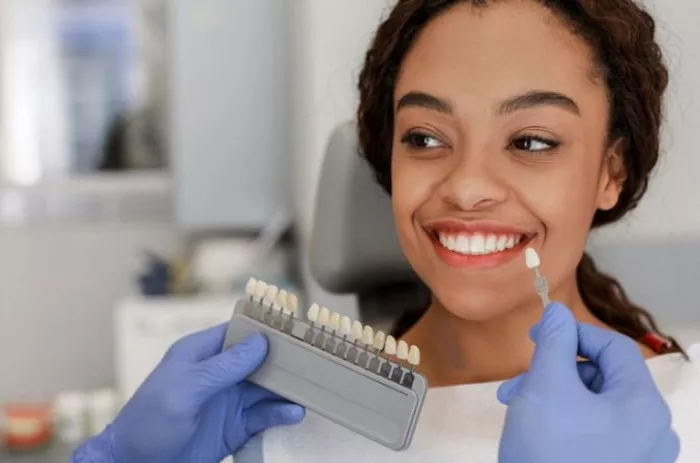The quest for a dazzling, white smile has led many to wonder: Is there such a thing as permanent teeth whitening? With countless products and procedures promising long-lasting results, it’s easy to feel overwhelmed by the options. In this article, we’ll delve into the science of teeth whitening, explore the concept of permanency, and provide practical insights into maintaining a bright smile.
Understanding Teeth Discoloration
Before discussing whitening, it’s essential to understand why teeth become discolored in the first place. Teeth discoloration can be categorized into two main types: extrinsic and intrinsic.
Extrinsic Stains: These occur on the surface of the enamel and are often caused by external factors such as coffee, tea, red wine, tobacco, and certain foods. Poor oral hygiene can also contribute to the buildup of plaque and tartar, which can make teeth appear yellow or brown.
Intrinsic Stains: These originate from within the tooth and are often caused by factors like aging, trauma, excessive fluoride exposure during childhood, or certain medications (e.g., tetracycline antibiotics). Intrinsic stains are typically more challenging to address.
Understanding the type of discoloration is crucial because it determines the effectiveness of whitening treatments and whether “permanent” results are achievable.
How Teeth Whitening Works
Teeth whitening procedures primarily rely on bleaching agents, such as hydrogen peroxide or carbamide peroxide, to break down stains into smaller, less visible particles. This process lightens the color of the teeth, resulting in a brighter appearance.
Professional Whitening: Performed by a dentist, this method uses higher concentrations of bleaching agents and often includes light or laser activation to enhance results. It’s highly effective for both extrinsic and some intrinsic stains.
At-Home Whitening: Over-the-counter products like whitening strips, gels, and toothpaste contain lower concentrations of bleaching agents. While they can be effective for mild discoloration, they may not produce the same dramatic results as professional treatments.
Despite the effectiveness of these methods, it’s important to note that teeth whitening is not permanent. The results can last anywhere from a few months to a few years, depending on factors like diet, oral hygiene, and lifestyle habits.
The Myth of Permanent Teeth Whitening
The idea of permanent teeth whitening is appealing, but it’s important to set realistic expectations. Here’s why:
Enamel Wear and Tear: The outer layer of your teeth, the enamel, is porous and susceptible to staining over time. Even with the best care, it’s impossible to completely prevent new stains from forming.
Aging Process: As we age, the enamel naturally thins, revealing the yellowish dentin underneath. This intrinsic change cannot be reversed by whitening treatments.
Lifestyle Factors: Habits like smoking, drinking coffee, or consuming staining foods will inevitably lead to new discoloration, even after whitening.
Maintenance Requirements: To maintain a bright smile, periodic touch-ups are necessary. This means that even the most effective whitening treatments are not a one-time solution.
Tips for Long-Lasting Brightness
While permanent teeth whitening isn’t achievable, there are steps you can take to prolong the results and keep your smile looking its best:
Maintain Excellent Oral Hygiene
Brushing twice a day, flossing daily, and using an antibacterial mouthwash can help prevent the buildup of plaque and surface stains. Regular dental cleanings are also essential for removing tartar and maintaining oral health.
Be Mindful of Your Diet
Limit your consumption of staining foods and beverages, such as coffee, tea, red wine, and dark-colored berries. If you do indulge, rinse your mouth with water afterward to minimize staining.
Avoid Tobacco Products
Smoking or using tobacco not only stains teeth but also increases the risk of gum disease and oral cancer. Quitting tobacco is one of the best things you can do for your oral and overall health.
Use Whitening Products as Directed
Overusing whitening products can damage the enamel and increase tooth sensitivity. Follow the instructions provided by your dentist or the product manufacturer to achieve safe and effective results.
Consider Professional Touch-Ups
Depending on your lifestyle and the initial whitening method used, you may need professional touch-ups every 6 to 12 months to maintain your desired level of whiteness.
Alternative Options for a Brighter Smile
If you’re looking for a more durable solution to discoloration, there are alternatives to traditional whitening:
Dental Veneers
Veneers are thin shells made of porcelain or composite resin that are bonded to the front surface of the teeth. They can cover stains, chips, and gaps, providing a long-lasting, uniform appearance. While veneers are not a whitening treatment per se, they can create the illusion of a permanently white smile.
Bonding
Dental bonding involves applying a tooth-colored resin to the teeth and hardening it with a special light. It’s a less invasive and more affordable option than veneers, but it may not last as long.
Crowns
For severely discolored or damaged teeth, crowns can be used to restore both function and aesthetics. Crowns cover the entire tooth, providing a durable and stain-resistant solution.
The Role of Genetics in Teeth Color
It’s worth noting that genetics play a significant role in determining the natural color of your teeth. Some people are born with thicker, whiter enamel, while others may have naturally yellowish or grayish teeth. Whitening treatments can enhance your natural shade, but they cannot change your genetic predisposition.
Conclusion
While the concept of permanent teeth whitening is enticing, it’s important to recognize that it’s not a realistic goal. Teeth whitening is a process that requires ongoing maintenance and care. By understanding the causes of discoloration, choosing the right treatment, and adopting healthy habits, you can achieve and maintain a brighter, more confident smile.Remember, the key to a dazzling smile isn’t just about whitening—it’s about overall oral health. Regular visits to your dentist, a balanced diet, and a consistent oral care routine will go a long way in keeping your teeth healthy and radiant. So, while permanent whitening may be a myth, a beautiful smile is always within reach.

